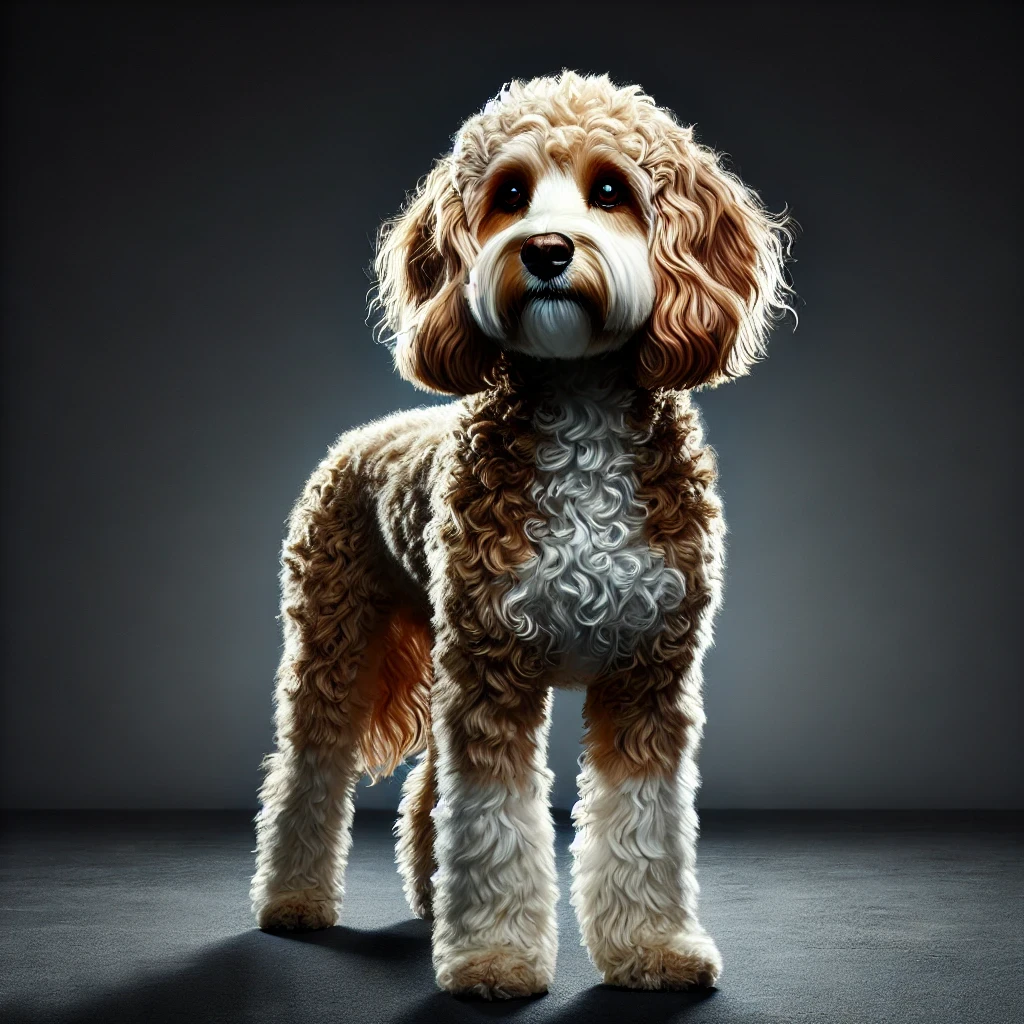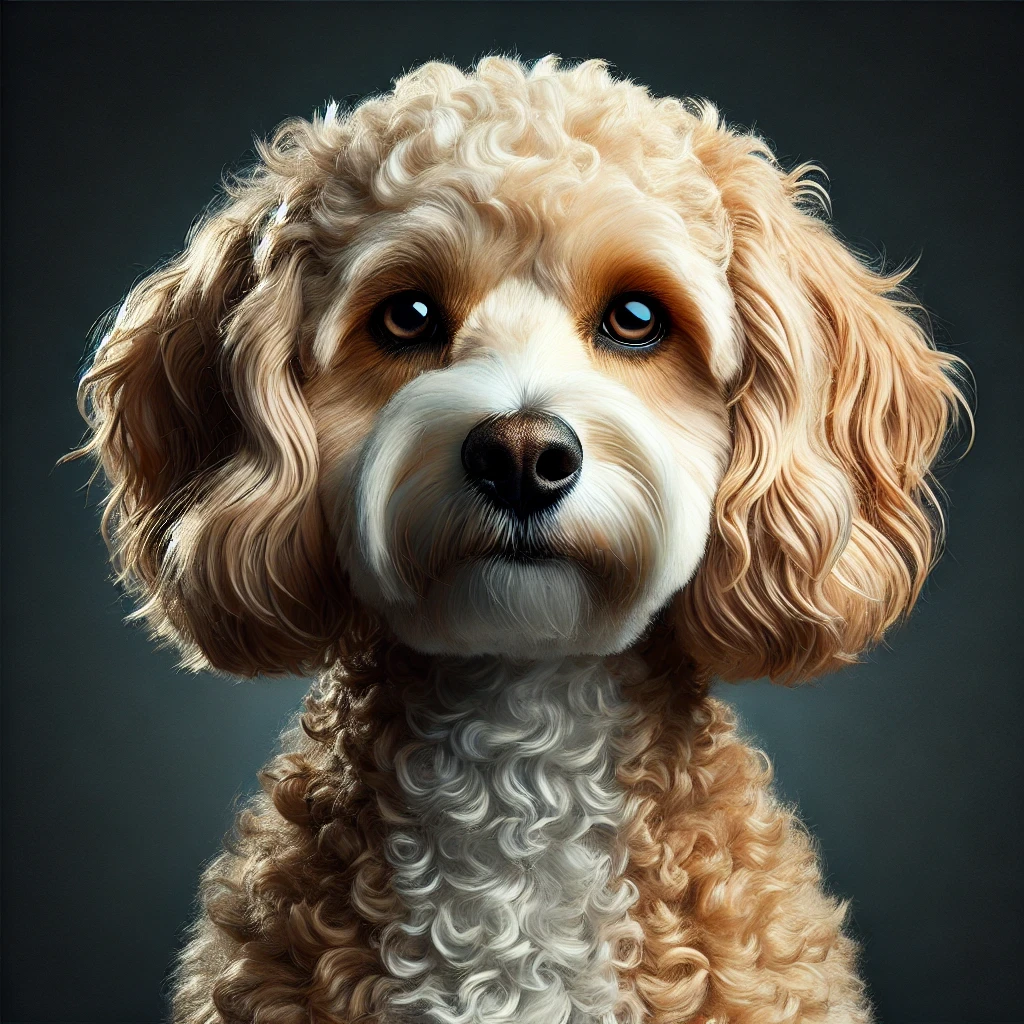In this comprehensive guide, we’ll break down all the essential Poogle dog breed facts, including:
- Where the breed comes from
- What to expect in terms of temperament and behavior
- Exercise and mental stimulation needs
- Grooming and coat care
- Health issues to be aware of
- Lifespan and general care
- Fun facts that make this breed stand out

If you’re searching for a dog that’s fun-loving, intelligent, and great with families, the Poogle might check all your boxes. A cross between a Poodle and a Beagle, this hybrid breed brings together two of the most popular and lovable dogs into one charming package.
Poogles are known for their high energy, affectionate nature, and a clever mind that keeps their owners on their toes. Thanks to the Poodle’s brainpower and the Beagle’s cheerful disposition, the Poogle is not just adorable—it’s also a joy to live with. Whether you’re an active single, a growing family, or an older couple looking for a loyal companion, this mix adapts well to a variety of lifestyles.
But before you bring one home, it’s important to understand what makes the Poogle unique. From their personality quirks and training needs to potential health concerns and grooming habits, there’s more to this designer dog than just a cute face.
Whether you’re a first-time dog owner or a seasoned pet lover, this overview will help you decide if the Poogle is the right furry friend for your home.
Origins of the Poogle
The Poogle dog breed is a charming hybrid that brings together the Beagle and the Miniature or Toy Poodle—two breeds known for their intelligence, affection, and energy. This crossbreed is part of the growing trend of “designer dogs” that surged in popularity in the early 2000s, especially as pet owners began seeking the unique benefits of hybrid vigor, hypoallergenic coats, and balanced temperaments.
Poogles were intentionally bred to combine the Poodle’s brainpower and low-shedding qualities with the Beagle’s friendliness, compact size, and strong hunting instincts. The result? A medium-sized dog that is smart, loyal, playful, and easier to manage for allergy-sensitive households.
While the exact origin of the first Poogle is hard to trace, the breed most likely emerged in the United States, where other popular Doodle mixes like the Labradoodle and Goldendoodle were also being developed. Poogles quickly gained popularity among families and individuals looking for a friendly, trainable dog with a bit more personality than your average small breed.
Learn How Veterinary PPC Helps Dog Owners
What They Inherit from Each Side
🧠 From the Poodle side, Poogles often inherit:
- High intelligence and quick learning ability
- A desire to please their owners
- A soft, curly or wavy coat that tends to shed less
- Sensitivity to moods and a gentle temperament
🐾 From the Beagle side, Poogles bring:
- A happy-go-lucky personality and love of play
- A curious nose that loves to sniff and explore
- Strong pack instincts and love for family bonding
- Vocal tendencies and a bit of independence
Because of these dual influences, Poogle dog breed facts often highlight how adaptable these dogs are. They’re just as comfortable curling up on your lap as they are exploring the backyard with their nose to the ground.
This balanced combination of traits has made the Poogle a standout among designer breeds—offering a great mix of smarts, charm, and companionship for modern households.
Read Pug Dog Breed Facts
Temperament and Personality
When it comes to Poogle dog breed facts, one of the most appealing qualities of this hybrid is its adaptable and well-rounded temperament. Poogles are known for blending the best behavioral traits of both parent breeds—the loyal, curious nature of the Beagle and the sharp intelligence and sociability of the Poodle.
This mix creates a dog that’s not only affectionate and playful but also alert and highly trainable. Whether you’re looking for a family companion, a fun-loving buddy, or a smart dog to challenge with tricks and puzzles, the Poogle fits the bill.
Typical Poogle Personality Traits
🧡 Friendly and sociable:
Poogles tend to be people-oriented and thrive on human interaction. They get along well with children, strangers, and other pets, making them ideal for multi-pet homes and social households.
👃 Alert and curious:
Thanks to their Beagle lineage, Poogles are naturally inquisitive and love using their nose. You’ll often find them sniffing around the yard or following scents on walks.
🧠 Intelligent and eager to learn:
With their Poodle genes, Poogles are quick learners. They respond well to positive reinforcement and enjoy mental stimulation. That said, their smarts can also lead to a bit of mischief if they’re under-stimulated.
💞 Loyal and affectionate:
Poogles form deep emotional bonds with their family. They crave companionship and often follow their owners from room to room. Leaving them alone for long periods may result in separation anxiety.
🎾 Playful and energetic:
Poogles love to play—fetch, tug-of-war, or simply running around the yard. They require regular exercise and stimulation to prevent boredom-related behaviors like digging or chewing.

Read Scottish Terrier Dog Breed Facts
Exercise Needs and Training
One of the most important Poogle dog breed facts to understand is that these energetic, intelligent dogs need both physical and mental stimulation to thrive. While they aren’t as intense as high-energy working breeds, Poogles still require consistent activity to stay healthy, happy, and well-behaved.
Neglecting their need for movement and brain work can lead to restlessness, boredom, and even destructive behavior. With the right daily routine, though, a Poogle becomes a joyful and attentive companion.
How Much Exercise Does a Poogle Need?
Poogles benefit from a variety of activities that stimulate both their body and mind. A combination of walks, play, and problem-solving games works best:
🐾 Daily walks (30–60 minutes):
Whether it’s a brisk morning walk or an evening stroll, Poogles need at least 30 minutes of walking per day. More active Poogles may require closer to an hour, especially younger dogs.
🎾 Playtime and interactive games:
Fetch, tug-of-war, and hide-and-seek games are great for burning energy. Nose-driven games like “find the treat” are especially satisfying due to their Beagle ancestry.
🧠 Mental stimulation:
Because Poogles inherit high intelligence from the Poodle side, they love a challenge. Rotate puzzle toys, try basic agility courses, or teach them new tricks regularly. Training sessions can double as both bonding time and brain workouts.
Training Tips for Poogles
Training a Poogle can be a joy—but you’ll need the right approach. Their clever mind means they pick up on commands quickly, but their Beagle side may introduce a hint of stubbornness. The good news? They want to please you—as long as you keep things interesting.
✅ Use positive reinforcement:
Praise, treats, and play work wonders. Avoid harsh corrections, as they may shut down or become defiant.
🎯 Keep sessions short and upbeat:
Aim for 5–10 minute training bursts, especially for puppies. Poogles respond best to fast-paced, reward-filled lessons.
🔁 Be consistent:
Poogle training requires structure. Inconsistent rules will confuse them, and that clever Beagle nose may lead them into mischief if boundaries aren’t clear.
👋 Socialize early and often:
Expose your Poogle to people, other dogs, and new environments early. This helps reduce barking, separation anxiety, and nervousness in adulthood.
Health and Lifespan
Like all breeds, Poogle dogs have specific health risks—mostly inherited from their Poodle and Beagle parents.
Common health concerns include:
- Hip dysplasia
- Epilepsy (more common in Beagles)
- Eye conditions such as progressive retinal atrophy
- Ear infections due to floppy ears
- Allergies and skin sensitivity
- Obesity, especially if under-exercised
With proper care, routine vet visits, and a balanced diet, the average Poogle lifespan ranges from 10 to 15 years.
Coat and Grooming
When it comes to Poogle dog breed facts, grooming needs vary depending on which parent breed your dog takes after. Poogles can inherit either the curly, low-shedding coat of the Poodle or the short, dense fur of the Beagle—or land somewhere in between. Most Poogles have soft, wavy coats that are moderately easy to maintain.
While they are often promoted as low-shedding dogs, it’s important to remember that not all Poogles are hypoallergenic. Shedding levels and grooming demands can differ even within the same litter.
Read Cost of a Vet Visit for Dogs: What Owners Should Expect
Grooming Needs for a Poogle
🪮 Brushing 2–3 times a week
This helps reduce loose hair, prevent tangles, and keep their coat soft and shiny. If your Poogle has a curlier coat, daily brushing might be necessary to avoid matting.
🧼 Bathing every 4–6 weeks
Poogles don’t require frequent baths unless they get especially dirty. Use a mild dog shampoo to avoid drying out their skin and coat.
👂 Clean those floppy ears regularly
Both Poodles and Beagles are prone to ear infections due to limited airflow inside their ears. Check for wax buildup, moisture, or odor once a week, and clean with a vet-approved ear solution.
✂️ Professional grooming may be needed
If your Poogle leans toward the Poodle side, regular grooming appointments every 6–8 weeks can help maintain coat shape and hygiene. Trims around the face, paws, and tail keep them looking tidy.
🦷 Don’t forget teeth and nails
Brush your Poogle’s teeth 2–3 times a week to prevent tartar buildup. Nail trimming should be done monthly or whenever you hear clicking on hard floors.
Poogles are generally easy to manage when grooming becomes part of a regular routine. Early exposure to brushing and bathing helps them adjust, making the experience smoother for both you and your pup.

Learn How Often Should Dogs Go to the Vet
Fun Facts About Poogles
Let’s wrap up these Poogle dog breed facts with some lighthearted trivia and interesting details about this charming hybrid breed:
📛 They go by many names
While “Poogle” is the most popular term, you might also hear them called Beaglepoos or Beagledoodles—a nod to their Poodle and Beagle ancestry.
🐶 Great for scent games and agility
With a Beagle’s nose and a Poodle’s brain, Poogles shine in dog sports like nose work, agility courses, and obedience competitions. Their love of learning and natural curiosity give them a performance edge.
📸 Social media stars
Thanks to their adorable, teddy bear-like looks and expressive eyes, Poogles are frequent favorites on Instagram and TikTok. Pet parents often love showing off their antics and stylish grooming cuts.
🌿 Low to moderate shedders
Poogles are more allergy-friendly than many other breeds. While not fully hypoallergenic, their coat tends to shed less than average—especially if they inherit more Poodle genetics.
💡 Perfect mix of brains and charm
If you’re looking for a dog that’s smart, cuddly, and active without being overwhelming, the Poogle hits a sweet spot. They bring a great balance of playfulness and obedience to family life.
Poogle Dog Breed Factual Conclusions
The Poogle dog breed offers a wonderful mix of brains, heart, and playfulness. If you’re looking for a fun-loving, affectionate dog with a touch of mischief, this Beagle-Poodle mix might be your perfect pup.
We hope these Poogle dog breed facts have helped you learn more about what makes this hybrid so special. Whether you’re adopting a puppy or just exploring breed options, the Poogle is worth serious consideration for families, individuals, and dog lovers of all ages.
Visit Dog Breed Facts

